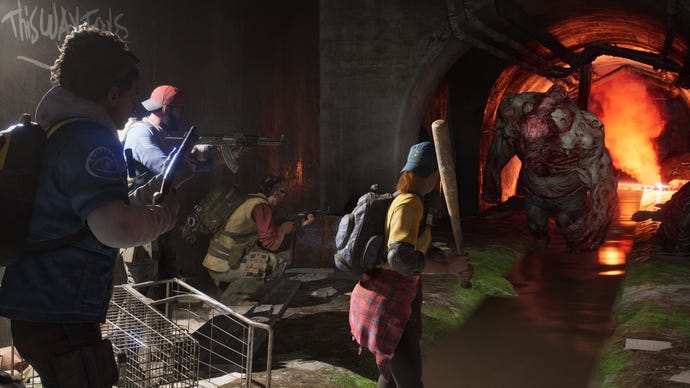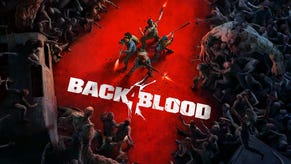Back 4 Blood tips: unlocking Prepper Stash doors, sharing ammo, Supply Point farming and healing trauma
Back 4 Blood may give off Left 4 Dead vibes, but it's a much more mechanically complex game.
Back 4 Blood is here, and we’ve been playing it. Whether you’re getting some serious Left 4 Dead vibes from this one - hoping it would bring back your old gnome run squad, or you’re approaching it with few expectations – there’s a fun co-op game with solid mechanics and interesting level design to be enjoyed here.
For as many tutorials and helpful prompts as Back 4 Blood has, it doesn’t always do a good job of explaining some of its systems. It leaves a few for you to discover on your own, too. We’re here to save you some of the trouble, so read our best Back 4 Blood tips below and watch Dorrani’s video for more.
Arrange your cards right because it matters
The card system in Back 4 Blood doesn’t quite operate by the same rules as other games. It’s important to remember this, and treat cards more like perks rather than random bonuses in a hand. Because of the way the system works, you should take the time to arrange your cards in the order you think will be the most useful. For instance, early on, you may want to go for cards that boost Copper earn or let you highlight useful items through the environment, and save the more powerful damage-boosting and health-buffing cards for later on in the run.
You get to pick a new card every time you reach a saferoom. Even if you join a match late, the game will let you pick cards for every stage of the level you missed. This means that, with the right deck, you can guarantee a certain set of perks every time.
First card is always free
Following on from the earlier point, you should consider putting an indispensable card in your deck’s first slot. Anything you know you can’t live without should go there. A general, universally useful card like a weak point damage boost, or the card that replaces your standard melee with a knife will never not come in handy.
If you tend to stick with a certain weapon class, picking a card that complements it is also a good idea, such as those that enable life leech for melee builds.
Reload your sidearm in every saferoom
For some reason, every time you advance into the next section of the map in a saferoom, the game likes to unload your sidearm. You have to manually bring it up and reload it, every time. This was something I noticed in the beta which I just thought was a bug that will be fixed later. It may still be a bug, but it’s grown into becoming its own little quirk now, so maybe Turtle Rock won’t be removing it.
It’s not a major deal, but it could be helpful to remember in case you run into trouble and end up needing to use your sidearm, only to have to wait for the reload animation as you’re being rushed by a Tallboy.
Pipe bombs over grenades
Listen, we all love a big bang, especially considering how much damage they do to special infected and bosses in Back 4 Blood. But, on any difficulty higher than Recruit, you need to be a lot more concerned with not getting swarmed by common zombies.
For this reason, I’d go with a pipe bomb over a grenade 90% of the time. It does decent damage, and has a long fuse - enough for you to get a heal off while the braindead buggers chase after it and give you some precious room to breathe.
Sure, pipe bombs won’t really help with special infected, but you can usually rely on red barrels, propane canisters and gasoline tanks in those cases.
Toolkits unlock doors
Sometimes you’ll come across those marked, locked doors. Back 4 Blood calls them Prepper Stashes, and much like everything else in the game, their locations and spawn rates are random. Sometimes you see more of them than you can open, other times it's the other way around.
The best way to prepare for stashes is to spare a slot for the toolkit, which you can buy from the saferoom vendor on every spawn. You can sometimes find toolkits randomly in the level, but they’re competing with a few other items that it doesn’t make sense to wait for them to spawn.
Prepper Stashes contain a great deal of resources, better weapons, Copper, healing items and usually even a First Aid Cabinet – all of which are handy on any difficulty that isn’t Recruit.
You can, and should, share ammo with teammates
A good Back 4 Blood squad is a specialised one; A team made up of classes rather than random characters. Pairing the right Cleaner with the right deck of cards is really where the game shines, so don’t be afraid to specialise.
Usually, this also means that some players will gravitate towards certain weapons. Ideally, these are weapons that complement their passives. You can definitely tell the gameplay style Turtle Rock had in mind when designing every Cleaner.
But ammo is typically scarce in Back 4 Blood, so always share the ammo type you’re not using with teammates, and call out ammo you can’t pick up. Even if you’re not using a shotgun, it helps to keep a few shells in your inventory in case your shotgun-toting Holly teammate needs them down the road.
There’s sadly no way to ping the ammo type and call out that you need it, so just try to communicate with your teammates and hopefully someone will drop you a few rounds. To drop ammo, just bring up your inventory and left/right click on the type you want to share.
You don’t have to run around Fort Hope to get s**t done
This seems like something that came out of focus testing, or maybe it was the plan all along. The long and short of it is that all the functions Back 4 Blood’s Fort Hope hub offers can be seamlessly accessed in the game’s menu. By hitting Tab on PC, you can manage your decks, customise your characters, pick weapon skins, invest in Supply Runs, and start a campaign/PvP/solo run.
Basically, everything except actually testing out weapons at the firing range. This could save you a bit of time when you have to go back to Fort Hope to pick more cards.
Keep trauma under control
Trauma is one of those pesky mechanics that has the potential to ruin otherwise good runs. The more you die in Back 4 Blood, the more you accrue trauma. This simply blocks out sections of your health bar, which cannot be healed by bandages or medkits.
Trauma is a major deal on higher difficulties, not just because it makes you more vulnerable to getting incapacitated, but also because the amount of trauma damage you take varies between difficulties.
Some Cleaners have higher resistance to trauma, but you can also add a card or two to your deck to ward off against it as much as possible. The only way to heal trauma is by using a First Aid Cabinet. Those are randomly found in the levels themselves, sometimes behind locked rooms and other times just randomly in a cabin. Certain saferooms also have those healing stations, but the number of free uses they offer varies.
This is why it’s best to allow teammates with the worst trauma damage to grab the free heals first before you can pool your Copper together to get the rest of the squad topped up.
Don’t be afraid to farm on Recruit for Supply Points
This is one for players who like to plan ahead. Supply Points, the currency that lets you unlock new cards – the meat and potatoes of Back 4 Blood – can be farmed on the easy Recruit difficulty. So long as you’re playing with at least one person, you’re going to earn some points every time you finish a section.
This is a good way to farm those points and beef up your deck before attempting the higher difficulties. Decks, especially specialised decks, are much more crucial on Veteran and beyond, so spend some time chilling on Recruit to build up your Supply Point stash early on – or whenever you need some.






